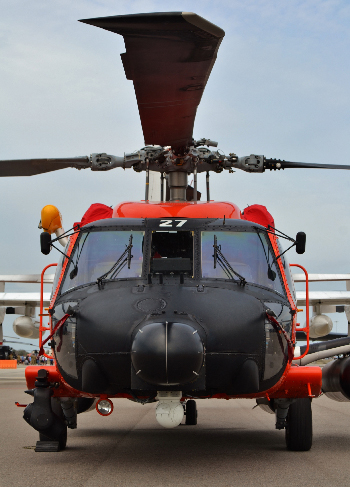Subscriber question:
"I was following a Coast Guard helicopter to a runway and started to think about wake turbulence. But Tower didn't mention anything about 'caution wake turbulence'. I know helicopters kick up a lot of air when they hover, but do they make a wake? Or is it just too small to be of concern?" —Ester A.
Jeff:
 “The short answers are: Don’t expect ATC to say anything about helicopter wake turbulence; helicopters create wake vortices and downwash (and they are different things); and you absolutely should steer clear of them—perhaps even more so than airplanes.
“The short answers are: Don’t expect ATC to say anything about helicopter wake turbulence; helicopters create wake vortices and downwash (and they are different things); and you absolutely should steer clear of them—perhaps even more so than airplanes.
It’s not the controller’s fault that there was no warning. Controllers are not routinely trained about the danger of helicopter wake turbulence. The guidance is focused on aircraft weighing more than 41,000 pounds. Few helicopters out there are that heavy.
The air that’s sent swirling when a helicopter hovers or does a slow air taxi is called ‘downwash.’ Downwash is absolutely a source of turbulent air and a hazard to people and aircraft that are nearby. Most helicopter pilots understand this and do their best to avoid risk to those around them. But it’s still wise to make sure loose items are secure—including light airplanes—if a helicopter is hovering nearby. Most sources say the risk area is three times the rotor diameter from the edge of the rotor arc of the helicopter. To put some numbers on that, a Coast Guard Jayhawk has a rotor diameter of 54 feet. Three times that plus the radius of the rotor itself means being 189 feet from the helicopter. That’s almost two thirds of a football field.
Once the helicopter is in forward motion over about 20 knots, however, it produces wake turbulence trailing behind it similar to an airplane. This wake can drift in the wind, just like airplane wake turbulence. However, helicopter wake doesn’t always sink right away. It can even rise. Three minutes is the recommended duration to wait before landing behind a helicopter, even if you think it’s not much bigger than your airplane. Failure to do so could create a situation like a Cessna 120 that was captured on video and made the rounds of the internet a while back. If you’re interested in more technical details, the FAA did a study on helicopter wake vortices in 1996.
So, yes, steer clear of helicopter wake. Time will tell if people-size quadcopters are equally hazardous or not.”
Do you leave space behind helicopters for their wake turbulence?

